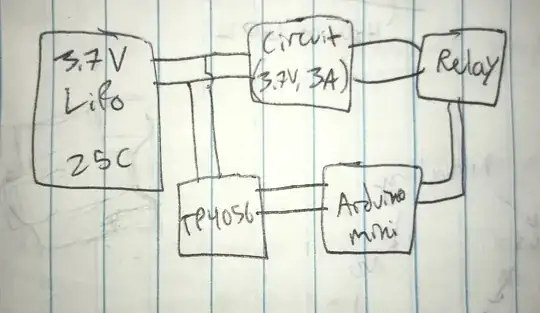You can see in my crumby schematic that I am using a Non-latching relay to turn on a 3A circuit (one of them arc lighters), which is powered by a 25C (supposedly) lipo battery. That same battery also powers an Arduino through a TP4056. This works fine when I first turn it all on, but once the relay is activated by the Arduino, the lighter + Relay only turn on for a split second before stopping (when the Arduino is powered via USB, it works fine). I am thinking that the Arduino+Relay+Lighter is too much for the battery, even though it claims to be 25C. It is just strange because the Arduino+Activated Relay consume what, like 200 mA?
Notes:
When I manually turn on the lighter, the light on the Arduino dims a fair bit, but stays on.
The Arduino is running at logic level of 3.3V so that I didn't need a booster.
 As for fixes, I was thinking about trying to use a transistor or SSR instead of the chunky relay I have now (which would be good, I need this to be compact). Or maybe the TP4056 is failing to provide enough output despite a decent input?
As for fixes, I was thinking about trying to use a transistor or SSR instead of the chunky relay I have now (which would be good, I need this to be compact). Or maybe the TP4056 is failing to provide enough output despite a decent input?
I am FAR from an electrical engineer so if anyone has any pro tips for improving this it would be much appreciated.